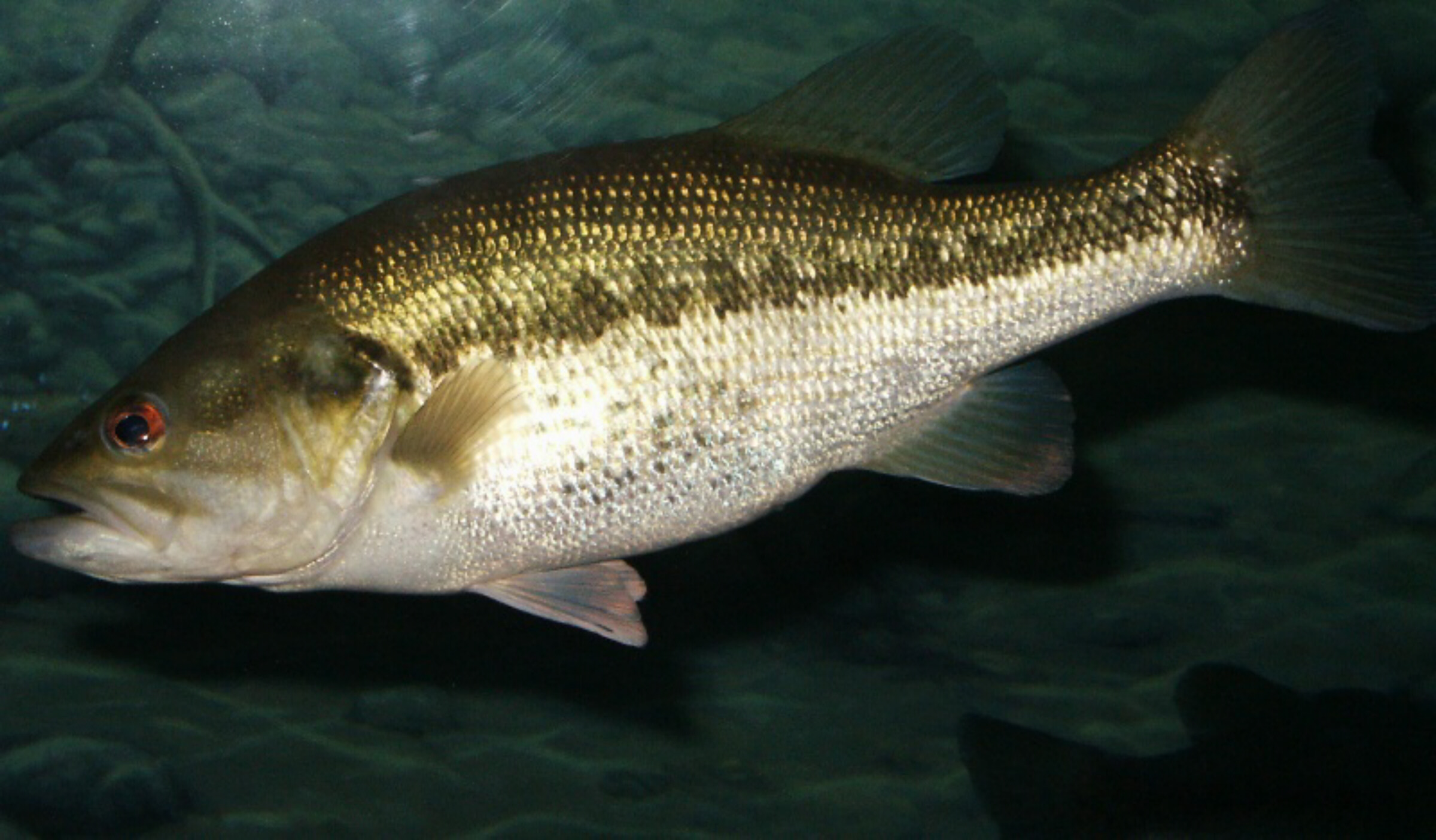The pictures we use in our articles might not show exactly what the words say. We choose these pictures to make you interested in reading more. The pictures work together with the words but don’t take their place. The words still tell you the important facts.
Largemouth bass are among the most sought-after freshwater game fish, captivating anglers worldwide with their size, strength, and fighting spirit. Whether you're an experienced angler or a curious nature enthusiast, this comprehensive guide will dive deep into the world of these remarkable creatures. Join us as we explore 19 fascinating facts about largemouth bass that will not only enhance your fishing experience but also deepen your appreciation for these incredible fish.
1. The Name Game
Largemouth bass, scientifically known as Micropterus salmoides, have an interesting etymology. Their name comes from the Greek words "micro" (small), "pterus" (fin), and "salmoides" (salmon-like). This name reflects their large dorsal fin and resemblance to salmon, despite being part of the sunfish family.
2. Native Range and Global Presence
Originally native to North America, largemouth bass can be found across various regions from Florida to Maine, and west to Texas and Oklahoma. However, due to their popularity as game fish, they have been introduced to suitable habitats worldwide, making them a global sensation among anglers.

3. Impressive Size
One of the most striking features of largemouth bass is their potential to grow to impressive sizes. While most caught by anglers range between 1 and 5 pounds, these fish can grow much larger. The world record for a largemouth bass catch stands at an astounding 22 pounds and 4 ounces!
4. Longevity in the Wild
Largemouth bass boast an impressive lifespan, adding to their allure for anglers seeking trophy catches. On average, these fish live between 10 to 16 years in the wild. However, some individuals have been known to survive for 20 years or more, depending on environmental factors and fishing pressure.
5. Voracious Appetites
These fish are true opportunistic predators, known for their voracious appetites. Largemouth bass feed on a wide range of prey, including:
- Smaller fish
- Crayfish
- Frogs
- Insects
- Occasionally small mammals
This diverse diet contributes to their rapid growth and adaptability in various ecosystems.
6. Ambush Predators
Largemouth bass exhibit a unique feeding behavior known as "ambushing." They hide among vegetation or underwater structures, waiting patiently to surprise their prey with a sudden, powerful strike. This behavior makes them both efficient predators and challenging targets for anglers.
7. Camouflage Masters
To aid in their ambush tactics, largemouth bass have evolved impressive camouflage abilities. They typically sport a dark green to olive coloration on their backs, with lighter sides and a whitish belly. This color pattern helps them blend seamlessly with their surroundings, making them nearly invisible to both prey and predators.
8. Temperature Adaptability
While largemouth bass can adapt to both warm and cold waters, they tend to be more active in warmer temperatures. In warmer waters, they feed more actively and grow faster, which is why many anglers prefer fishing for them during the spring and summer months.
9. Powerful Jaw Structure
As their name suggests, largemouth bass are equipped with an impressively large mouth. This powerful jaw structure, complete with sharp teeth, makes them formidable predators in their ecosystem. Their ability to engulf large prey items contributes to their rapid growth and popularity among anglers.
10. Keen Sense of Smell
Largemouth bass possess a remarkable sense of smell, allowing them to detect prey from considerable distances. This ability is particularly useful in murky waters where visibility is limited. Anglers often take advantage of this trait by using scented lures to attract these cunning predators.
11. Spawning Behavior
During the spring season, largemouth bass engage in an interesting spawning ritual. Males construct circular nests in shallow water near vegetation, where females lay their eggs. This behavior provides a unique opportunity for anglers to target spawning bass, although it's important to practice responsible catch-and-release during this crucial period.
12. Parental Care
Unlike many fish species, largemouth bass exhibit parental care. After the female lays her eggs, the male takes on the role of protector. He guards the nest vigilantly, fanning the eggs with his fins to keep them oxygenated and free from sediment. This behavior continues until the eggs hatch, ensuring the best possible start for the next generation.
13. Early Life Stages
Young largemouth bass, also known as fry, start their lives feeding on tiny organisms like plankton and small insects. As they grow, they gradually transition to larger prey items, eventually adopting the predatory lifestyle of adult bass. This progression in diet is crucial for their rapid growth and development.
14. Environmental Sensitivity
Largemouth bass are sensitive to changes in their environment, making them excellent indicators of ecosystem health. Factors such as water quality, temperature fluctuations, and pollution can significantly impact their populations. This sensitivity underscores the importance of conservation efforts to maintain healthy bass habitats.
15. Popular Game Fish
It's no secret that largemouth bass are among the most popular game fish in North America. Their wide range of habitats, impressive size, and the challenging nature of catching them make them a favorite among anglers of all skill levels. The pursuit of trophy bass has spawned entire industries dedicated to bass fishing equipment and tournaments.
16. Economic Impact
The popularity of largemouth bass fishing has a significant economic impact. Bass tournaments, fishing gear sales, and related tourism contribute billions of dollars to local economies annually. This economic importance further emphasizes the need for sustainable management of bass populations.
17. Conservation Efforts
Given their ecological and economic significance, numerous conservation efforts are in place to protect largemouth bass populations. These initiatives focus on habitat preservation, water quality improvement, and responsible fishing practices. Many anglers participate in catch-and-release programs to ensure healthy bass populations for future generations.
18. Inspiration for Fishing Techniques
The challenging nature of catching largemouth bass has inspired a wide array of fishing techniques and lures. From topwater lures that mimic struggling prey to deep-diving crankbaits, anglers are constantly innovating to outsmart these clever fish. This ongoing evolution of bass fishing techniques adds to the excitement and appeal of pursuing these remarkable creatures.
19. Cultural Significance
Beyond their importance to anglers and ecosystems, largemouth bass have become cultural icons in many regions. They feature prominently in outdoor literature, art, and even local festivals celebrating fishing heritage. This cultural significance further cements their status as one of the most beloved freshwater fish species.
FAQs About Largemouth Bass
Q: What is the best time of day to catch largemouth bass?
A: Largemouth bass are most active during early morning and late afternoon, particularly in areas with suitable cover.
Q: How can I identify a largemouth bass?
A: Look for their distinctive large mouth that extends beyond the eye when closed, dark green to olive coloration, and a pronounced lateral line running along their side.
Q: Are largemouth bass good to eat?
A: While some anglers do eat largemouth bass, they are more commonly caught for sport. If you choose to keep them for consumption, be sure to follow local regulations and consume them in moderation due to potential contaminants in some waters.
Q: How can I practice responsible bass fishing?
A: Use appropriate tackle, handle fish carefully, and consider catch-and-release, especially for larger specimens. Also, be aware of local regulations and seasons to protect spawning populations.
Q: What’s the difference between largemouth and smallmouth bass?
A: While both are members of the black bass family, largemouth bass have a more pronounced upper jaw that extends beyond the eye, whereas smallmouth bass have a smaller mouth that doesn't extend past the eye. Smallmouth bass also tend to prefer cooler, rockier habitats.
In conclusion, largemouth bass are truly remarkable creatures that continue to captivate anglers and nature enthusiasts alike. Their unique behaviors, impressive adaptability, and significant ecological role make them a fascinating subject of study and pursuit. Whether you're an avid angler or simply appreciate the wonders of aquatic life, understanding these 19 facts about largemouth bass will undoubtedly enhance your appreciation for these incredible fish.
As you plan your next fishing adventure or outdoor excursion, keep these fascinating facts in mind. They'll not only improve your chances of landing a trophy bass but also deepen your connection to the natural world. Remember to practice responsible fishing and conservation to ensure that future generations can continue to enjoy the thrill of pursuing these magnificent creatures in our lakes, rivers, and ponds.






